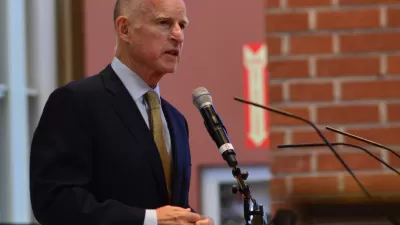Long considered the source of California's fiscal and land use woes, Proposition 13, passed by voters in 1978, limits increases in property tax. However, it may prove to be an 'economic stabilizer' during the current housing slump.
"For decades, Proposition 13 has been cast as the bane of cash-strapped local government, limiting property tax revenues even as California's housing market soared.
But this week, as county assessors reported rising tax bases despite the housing slump, they credited the 30-year-old law -- revealing its unexpected role as an economic stabilizer.
A stabilizer "prevents soaring tax bills for homeowners but also prevents tumbling tax revenue for governments", stated Jack Kyser, chief economist of the Los Angeles County Economic Development Corp.
"The big factor (in the increase in the tax base while home prices fell) is Prop. 13," said Los Angeles County Assessor Rick Auerbach, explaining his county's 6.9% increase in the total property assessment roll."
"Proposition 13, approved by voters in 1978, limits tax increases on a property to 2% a year as long as that property doesn't change hands. It kept tax rates lower than housing values during the long real estate boom. But because the 2% increases can be assessed even during housing downturns, governments can count on the extra revenue as long as most home values in a county have not fallen below the assessed values.
State law allows homeowners who believe their property values have dropped below their assessed value to have those values reconsidered, and thousands have done so. Over the last few months, county officials have been reviewing properties in their jurisdictions that were purchased after 2004, which are most likely to have lower values than the purchase price."
Thanks to The Roundup

Planetizen Federal Action Tracker
A weekly monitor of how Trump’s orders and actions are impacting planners and planning in America.

Map: Where Senate Republicans Want to Sell Your Public Lands
For public land advocates, the Senate Republicans’ proposal to sell millions of acres of public land in the West is “the biggest fight of their careers.”

Restaurant Patios Were a Pandemic Win — Why Were They so Hard to Keep?
Social distancing requirements and changes in travel patterns prompted cities to pilot new uses for street and sidewalk space. Then it got complicated.

Platform Pilsner: Vancouver Transit Agency Releases... a Beer?
TransLink will receive a portion of every sale of the four-pack.

Toronto Weighs Cheaper Transit, Parking Hikes for Major Events
Special event rates would take effect during large festivals, sports games and concerts to ‘discourage driving, manage congestion and free up space for transit.”

Berlin to Consider Car-Free Zone Larger Than Manhattan
The area bound by the 22-mile Ringbahn would still allow 12 uses of a private automobile per year per person, and several other exemptions.
Urban Design for Planners 1: Software Tools
This six-course series explores essential urban design concepts using open source software and equips planners with the tools they need to participate fully in the urban design process.
Planning for Universal Design
Learn the tools for implementing Universal Design in planning regulations.
Heyer Gruel & Associates PA
JM Goldson LLC
Custer County Colorado
City of Camden Redevelopment Agency
City of Astoria
Transportation Research & Education Center (TREC) at Portland State University
Camden Redevelopment Agency
City of Claremont
Municipality of Princeton (NJ)




























